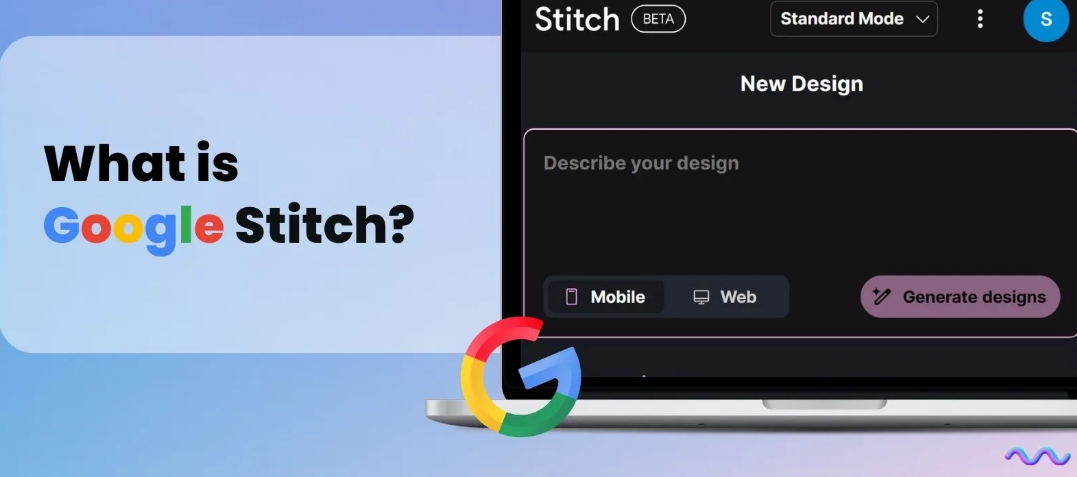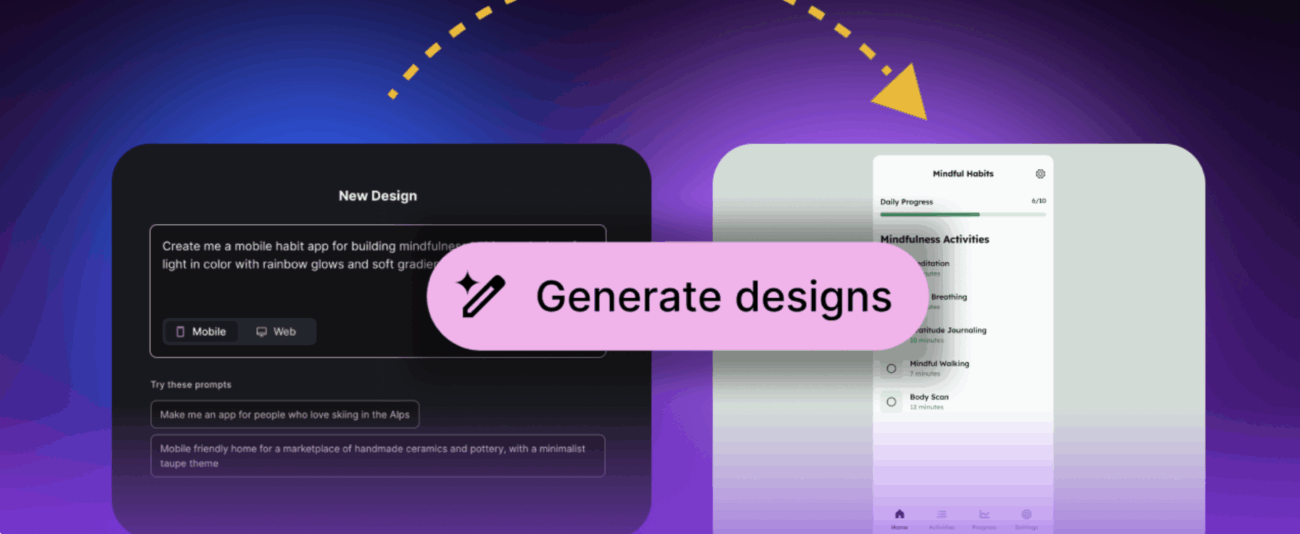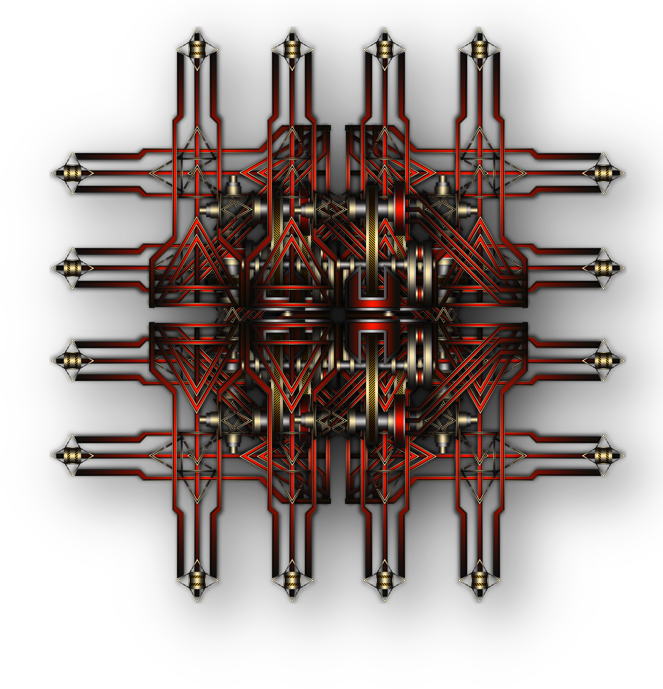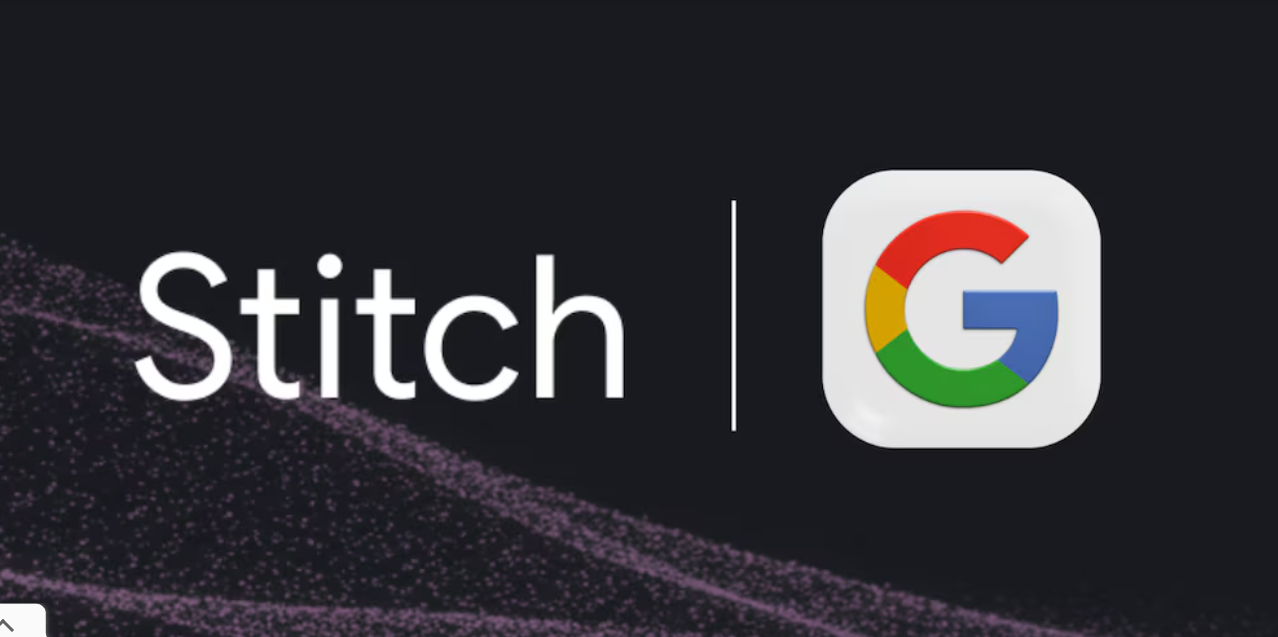In this ever growing world of AI-powered development, Google has recently introduced plainly, Stitch an amazing new tool, generating manufacturing-ready frontend UI code and built around text queries and image citizens. Powered by the incredibly powerful version of Gemini 2.5 Pro, Stitch will ensure the reduced distance between design and code and enable developers, designers, and product teams to take an idea to implementation faster than ever. It is a momentous movement toward a completely different method to build contemporary web and application interfaces as opposed to manually writing lines of CSS and React elements based on the use of natural language and visual cues.
🔍 What Exactly Is Google Stitch?
Stitch is an AI-driven frontend development tool that interprets:
- 📝 Text prompts like “create a dark mode pricing table with three tiers”
- 🖼️ Design references such as Figma exports, screenshots, or hand-drawn sketches
…and turns them into:
- ⚙️ Fully functional HTML/CSS/JS code
- 💻 Responsive layouts
- 🎨 Themed components matching brand guidelines
- 🧩 Compatible code with frameworks like React, Angular, and Vue
It is all about the speed, precision, and practically applicable, but not pieces of code to show in the demos, but entire parts, which are ready to be taken to production.
💡 Powered by Gemini 2.5 Pro: Why It Matters
At the heart of Stitch is Gemini 2.5 Pro, Google’s latest multimodal AI model. What sets it apart:
- 🧠 Deep context understanding: It can grasp UI design principles, accessibility standards, and layout intent
- 📷 Vision + text inputs: Gemini can simultaneously process image references and descriptive prompts
- 💬 Conversational refinement: Users can iteratively improve code with natural feedback like “make it mobile-friendly” or “use a pastel color scheme”
Stitch effectively turns into a front-end AI-assistant, minimizing the necessity to switch between contexts of design tools, documentation, and code editors.

🧪 Use Cases: Who Is Stitch For?
Stitch has the potential to transform workflows for:
👩💻 Frontend Developers
Build layouts faster with less boilerplate. Focus on logic, not styling.
🎨 UI/UX Designers
Turn mockups directly into code without relying solely on engineering.
🚀 Startup Teams
Rapidly prototype full interfaces without needing a large dev team.
🎓 Students & New Developers
Learn by generating and modifying real, clean code.
The tool might become the first assistant of startups, agencies, and product teams who create web apps, dashboards, or mobile interfaces.

🌐 The Future of Coding Is Collaborative
Google Stitch is another milestone toward natural-language programming, where design intent is expressed not just with the syntax but with a conversation.
With the help of instruments like Stitch, coding ceases to be the process of memorizing frameworks but communicating with AI in a simple way. This enables:
- 🛠️ Faster MVP development
- 🧩 Smarter UI component reuse
- 🔄 Real-time design-code iteration
As the Gemini 2.5 develops, you should soon expect Stitch to back up backend logic, user flows, and multi-platform deployment.
🔗 Source
Source: evolving.ai via Instagram







